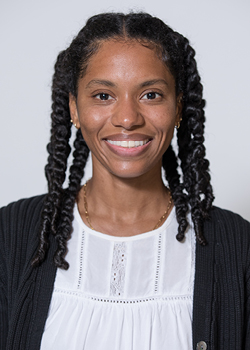New Clinical Research: The Importance of Screening Mammography in Monitoring Flap Reconstruction After Mastectomy
 Ashley Hastings-Robinson, MD, breast imaging fellow at UCSF, was first author of “The role of digital mammographic surveillance for detection of asymptomatic recurrence in autologous flap reconstructions” published in Clinical Imaging, along with authors Maggie Chung, MD, Jessica Hayward, MD, Kimberly Ray, MD, Elissa Price, MD, Ryan Navarro, MD, Breast Imaging Chief Bonnie Joe, MD, PhD, and faculty mentor Amie Lee, MD.
Ashley Hastings-Robinson, MD, breast imaging fellow at UCSF, was first author of “The role of digital mammographic surveillance for detection of asymptomatic recurrence in autologous flap reconstructions” published in Clinical Imaging, along with authors Maggie Chung, MD, Jessica Hayward, MD, Kimberly Ray, MD, Elissa Price, MD, Ryan Navarro, MD, Breast Imaging Chief Bonnie Joe, MD, PhD, and faculty mentor Amie Lee, MD.
There has been a substantial rise in mastectomy rates for the treatment of breast cancer in the United States over the last decade. After mastectomy, there is still a low but existent risk of cancer recurrence. “There really is no consensus standard for screening this patient population for breast cancer. Screening practices therefore vary widely, and these patients do get asymptomatic breast cancer recurrences,” Hastings-Robinson noted. “We are happy to add to the data that is out there so that there can be more guidance or guidelines on how to best monitor these patients who have had flap reconstructions.”
The study was a retrospective database review that identified mammograms performed on asymptomatic patients with flap reconstructions over a nine-year period, and is one of the few studies available on this topic. The findings suggest that mammography may have utility in detecting asymptomatic breast cancer recurrence in flap reconstructions after mastectomy.
Lee said, “In this study, we found that mammography effectively detected asymptomatic locoregional recurrence in autologous flap reconstructions with high sensitivity, high specificity, and a cancer detection rate comparable to national benchmarks for screening of native breasts.”
These findings support the American College of Radiology (ACR) Appropriateness Criteria and suggest that routine mammographic screening may be appropriate after mastectomy for breast cancer with autologous reconstruction, particularly for patients still receiving regular screenings of the remaining unaffected native breast.
